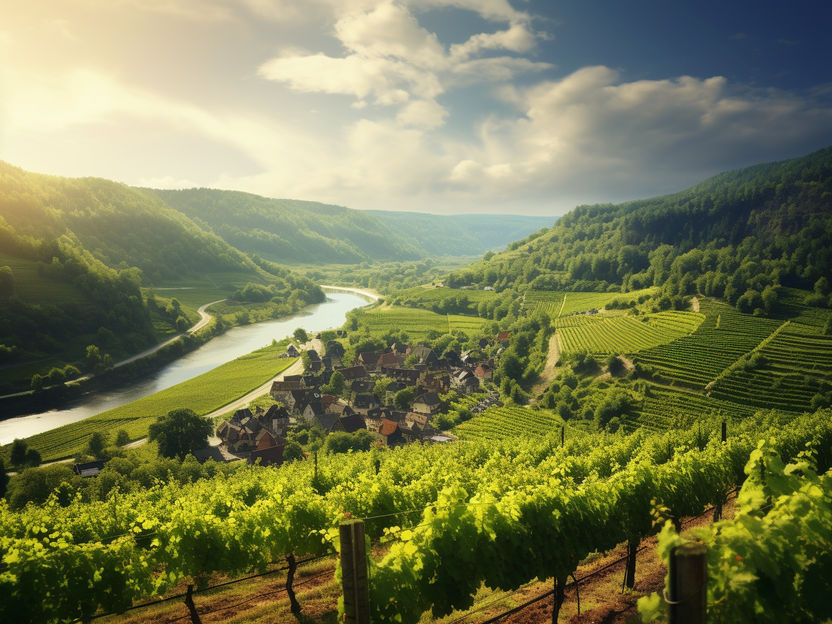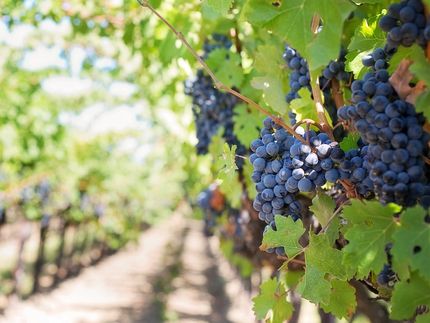Vine-rich Germany
The big TUI wine report
Advertisement
Germany is famous for its first-class beer, but the Federal Republic has an equally rich wine tradition that dates back to the ancient Romans over 2,000 years ago. Today, over 100 grape varieties grow here and Germany's wine exports are impressive by international standards. As well as it thrives, it is also consumed diligently: Germans drink an average of 20 liters of wine per year, which corresponds to around two glasses per week.

Symbol image
computer generated picture
Germany's wine industry is flourishing: German Riesling and co. are increasingly conquering the international markets. At the same time, periods of intense heat, increased weather extremes and viruses are jeopardizing the grape harvest in German wine-growing regions. The latest TUI Wine Report sheds light on the success story of German wine exports and the effects of climate change on the tradition and future of viticulture.
Germany's wine preferences and cultivation are diverse
German viticulture is not only characterized by its diversity of over 100 grape varieties, but is also an important economic factor. However, the industry is currently facing new challenges, particularly due to the phylloxera virus and climate change. These threats require innovative adaptation strategies and could affect wine production and quality in the long term. Despite these challenges, the wine sector remains a central part of the German economy and culture.
The search queries show: German wine lovers prefer a diverse selection of grape varieties that thrive in different climates and soil conditions around the world and develop unique flavor profiles. Pinot Grigio is particularly popular, being searched for 41,700 times a month by Germans using the Google search engine and originating from Burgundy in France - a region known for its six wine-growing areas and a UNESCO World Heritage Site since 2015. The red wines Zinfandel and Primitivo, made from the Croatian Kaštelanski grape, are also in demand, coming in second place with 25,800 monthly searches. In third place with an average of 18,100 searches is French Chardonnay, which originates from Bordeaux.
Production growth and Germany's ranking in an international comparison of winegrowing
In 2022, Germany recorded considerable growth in wine production, with a total volume of 8.9 million hectoliters - an increase of 500,000 hectoliters compared to previous years.
This secured Germany ninth place among the world's wine producers. This impressive result contributed to an annual turnover of 3.19 billion euros, which underlines the importance of the wine industry for the German economy.
Despite the high production figures, Germany only ranks 18th in the world in terms of vineyard area with 103,000 hectares. In comparison, Spain tops the list with 3.955 million hectares. These figures make it clear that the productivity and quality of German wine does not necessarily depend on the size of the area under cultivation, but rather on efficient cultivation methods and the quality of the grapes.
German viticulture in transition: Shifting harvest times and growing regions
The traditional grape harvest times in Germany are increasingly shifting from fall to late summer. This change is both a curse and a blessing for winegrowers. On the one hand, the earlier harvest makes it possible to avoid damage caused by autumn frosts; on the other hand, it places new demands on cultivation and harvesting methods.
Climate change is also leading to a northward shift in wine-growing zones. Countries such as Sweden and Norway, which were not traditionally known for viticulture, are increasingly emerging as new players in the wine industry. This development opens up new opportunities and markets, but also presents established wine regions with the challenge of adapting to the changing climatic conditions.You can find all the results and figures from the major TUI Wine Report here: https://www.tui.com/wein-report/
Note: This article has been translated using a computer system without human intervention. LUMITOS offers these automatic translations to present a wider range of current news. Since this article has been translated with automatic translation, it is possible that it contains errors in vocabulary, syntax or grammar. The original article in German can be found here.




































































